3D reconstruction system for capturing moving objects of human body both inside and outside.
Technical Introduction

Wave grid pattern scanning
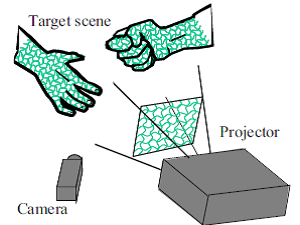
Fig.1
Scanning system with wave grid pattern
Reconstruction method with spatial-encoding structured-light just requires a single input, it is ideal to capture moving objects with high FPS. Therefore, many researches have been involved in spatial-encoding methods. Even though, there still remain several problems, i.e., ambiguities on correspondences and sparse reconstruction. So we propose a one-shot scanning method with single-colored wave grid pattern which can solve the aforementioned problems with the following methods.
Our system consists of a single projector and a camera as shown in Fig.1. The projector casts a static pattern which is shown in Fig.2. The pattern is configured with vertical and horizontal sinusoidal curves to create grid shape.
First, we detect curves from a captured image as shown in Fig.3. From the detected curves, intersection points are calculated, and a graph is also constructed by using intersection points as nodes of the graph. Then, for each intersection point, epipolar line on the projected pattern is calculated to find a correspondence. Since multiple candidates of correspondences are usually found, one solution can be determined by our belief propagation based technique. Finally, the depths for all the pixels are interpolated by matching between the pattern and the captured image and 3D shapes are densely reconstructed.
Since the proposed method is one of one-shot method, it can generate 3D shapes even if the target moves in fast motion as shown in movies.
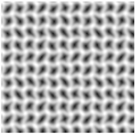
Fig.2
An example of wave grid

FIg.3
3D reconstruction ( input image, detected grid, grid reconstruction, dence reconstruction )
movie1: Reconstruction of hitting
movie2: Reconstruction of ball bounce
movie3: Reconstruction of water wave
Multi View System
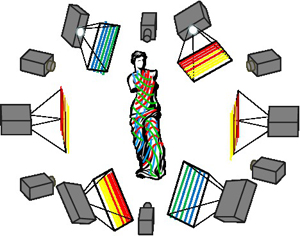
Fig.1
An Overview of the Multi View System
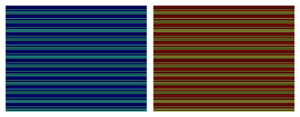
Fig.2
The projected pattern
This experiment is an application of one of our one-shot scan experiment using multiple camera-projector system. Since the pattern acquired by active reconstruction of an entire shape tends to overlap each other, it is difficult to have successful results. This experiment overcomes this problem by projecting two-color parallel light from each projector. In order to acquire more stable patterns, red and blue-based patterns were used (fig. 2). Our experiment utilizes 6 cameras and 6 projectors. Two patterns, shown on fig. 2, are projected from each projectors, then captured by the individual cameras (fig.3). When doing this, the projectors are rotated in order to prevent overlap of the same color. Patterns are then acquired from the images captured from each projectors (fig.4). Finally, 3D shape reconstruction is done using the acquired line information (fig.5).
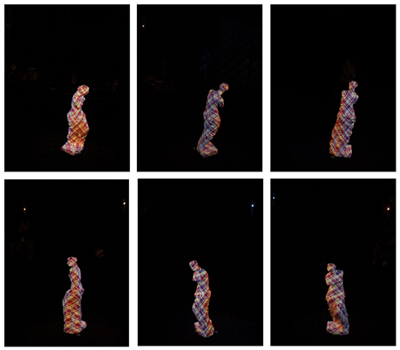
Fig.3
Projection result
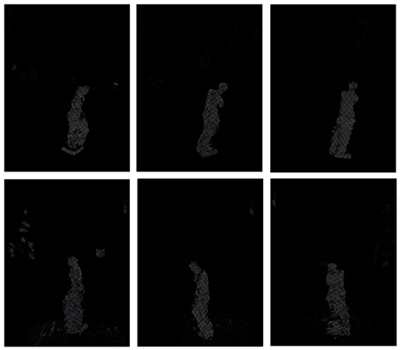
Fig.4
Pattern acquisition result
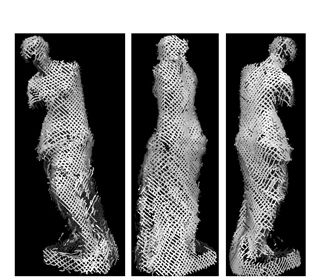
図5
Reconstruction result






